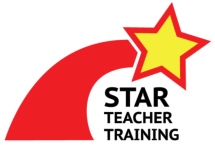Do you find yourself repeatedly giving the same instructions to your students in the same lesson? In my first year of teaching I sure did. I’d explain the activity, give visuals, and even check the class’s understanding with a couple questions. Then we’d start the activity and I’d inevitably find myself going to individuals or groups and re-explaining myself multiple times. In many cases the kids had no problem with the language and they’d even done that type of activity before. What was going on?
The answer was attention – I didn’t have everyone’s attention. It wasn’t until I got around to observing teachers that I found this common, powerful mistake. It seems like an obvious point, but in practice it isn’t for many new teachers. We have so many things we’re trying to keep in our heads that we often let that crucial point slip. I’ve even observed teachers with years of experience who find it completely normal that they’ll have to repeat themselves multiple times. It doesn’t have to be this way, though.
When you’re about to give instructions the first two steps are very important. First, get your materials and yourself ready. Next, get your students’ attention. The best way to do this is have a trained Attention Routine that everyone respects. For primary students my favorite is Happy Claps. Other teachers like counting down, call and responds, or even banging on their desks (not my favorite). The key for these is that you choose one, practice with the kids, use it, and respect it.
Make sure that once you have your students’ attention that you make use of it. Treat it like it’s really valuable. If you aren’t ready and you waste the moment then you’ll quickly train them to neglect you. I’ve witnessed many toxic classrooms where students have lost respect for their teacher, often because the teacher demands their attention but doesn’t have anything to offer them for it. It takes lots of hard work to repair those relationships.
Having everyone’s attention during instructions will save you time and energy. It gets exhausting repeating yourself. In addition, it’ll free up opportunities for you to monitor your students and get to know them better.






